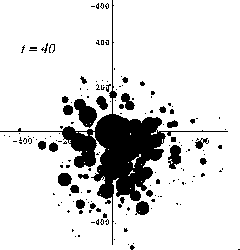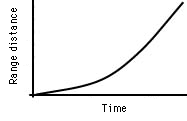Stratified Diffuion Model
Simulation Study of Stratified Diffusion Model
Fugo TAKASU, Kohkichi KAWASAKI*, and Nanako SHIGESADA
Department of Information and Computer Sciences, Nara Women's University, Nara 630, Japan
*Department of Knowledge Engineering and Computer Sciences, Doshisha University, Tanabe-cho, Kyoto 610-03, Japan
Forma, 1997, Vol. 12 No. 2, pp167-175.
Summary. We modeled biological range expansion by taking into consideration both the short range dispersal and the long range dispersal. The analysis by numerical calculations has suggested that the following factor is responsible for type 2 expansion: short range dispersal (random diffusion) combined with long range dispersal. Type 2 expansion is realized more clearly when the effect of long range dispersal is relatively influential than that of short range dispersal, i.e., when 1) parent population emits long range dispersers more frequently and 2) distance of long range dispersal is longer.
Our numerical analysis has shown that, when the distance of long range dispersers is drawn from Gaussian distribution, greater variance of the distance results in faster frontal speed and that the speed is higher when the distance is of exponential distribution with the same mean and greater variance. This result that the expanding speed is affected by the distribution form of jump distance, especially by greater variance in the distance, suggests importance to assess distribution form of the long range dispersal in actual systems when we are to estimate and predict the expanding speed in practical problems.
|
|
|
 |
|
|
| ランダム拡散による近距離移動と、飛び火的に生じる遠距離拡散のシミュレーションの一例(左図)。それぞれのコロニーはランダム拡散とロジスティック成長によって一定の速度で分布域を拡大する。それぞれのコロニーは、コロニーの外周距離に比例して長距離移動個体を放出して新たなコロニーを形成する。新たなコロニーはランダム拡散とロジスティック成長をして一定の速度で分布域を拡げつつ、さらに新たな核を形成する。動画があります(QuickTime 103Kb) |
|
|
|
 |
|
|
分布域の面積の平方根(分布域先端までの距離に相当)の時間変化(下図)。分布域先端が拡大する速度が、途中で切り替わっている。 |
|
|
|
|
|
|
|
|
|
takasu@ics.nara-wu.ac.jp